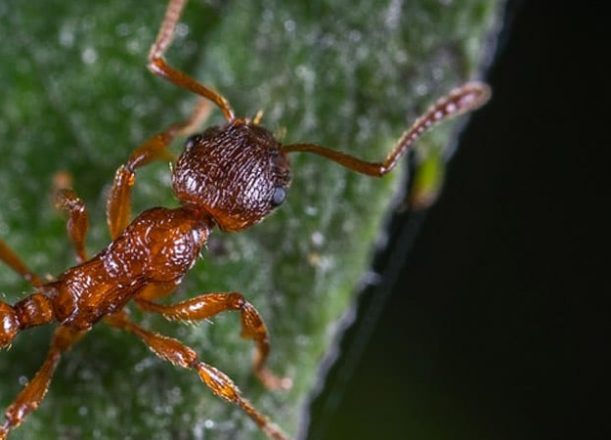Rodents, bugs and other pests have an uncanny ability to make their way inside your home. It probably seems like no matter what you do, they always show up at the worst possible moment.
While the best approach may seem to hire an exterminator, truth be told, there are things you can do yourself to keep pests outside where they belong.
As your trusty companion, I’ll show you the best way for how to do your own pest control without spraying a bunch of chemicals indoors. In fact, the real secret to a bug-free home is to eliminate the conditions that appeal to pests in the first place. Then they won’t be attracted to your house or cause you headaches.
Check and inspect
The first step in how to do pest control at home by yourself is to do a visual inspection around the exterior.
Look for pathways that insects and rodents could be using to get indoors. Make a note of all cracks and gaps, no matter how small they may seem, as well as any trees or bushes that are touching or hanging over your house.
Check for any pest droppings, nesting rubble or odd stains around the exterior surfaces of the home. These are clear indicators of where pests have a found an easy way to get inside.
If you can get up to the attic, check the vents and any openings that lead to the outdoors. Rodents are notorious for sneaking their way in through these holes and taking root up there
Replace mulch and trim back bushes
There are many types of mulch that bugs love to nest in. Organic mulch that’s made up of materials such as leaves, wood chips, and bark attract all sorts of nasty buggers to your home.
One of the easiest DIY pest control tips you can do is replace your mulch with cedar or cypress. Both of these mulches are naturally insect resistant.
If you have any bushes next to your home that are close enough to touch it, take some time to trim back the branches. Pests use these limbs as a convenient bridge to get into your house. The same thing goes for trees that have branches over the roof. Rodents use these as a springboard to get into your attic. So, trim those back as well.
Seal up cracks and gaps
Any areas of the home that has cracks, gaps or crevices need to be sealed up. This includes holes around piping, electrical, and cable wiring.
Not doing so is an open invitation for pests to enter your home and bring all of their friends with them.
The easiest way to block of these entry points is to go around filling them with expanding foam. A good brand is called GREAT STUFF. You can buy a cheap can at any hardware or home improvement store and a little goes a long way.
Install door sweeps and weatherstripping
Since bugs and rodents can wiggle their way through the tiniest of cracks, it’s important that you seal up the crevices around your doors and windows too.
A door sweep is a thin strip of material that tacks onto the bottom of your door to prevent drafts. Some types also include a piece you can install at the threshold to really seal it up tight. Adding this inexpensive piece to your entryways can stop pests from slipping their way in unnoticed.
The frame of your doors and windows is also an easy access point for bug intruders. Adding some cheap weatherstripping around these areas can reduce the gaps and keep insects out.
Ensure proper ventilation
Bugs thrive in moist environments and any area that’s damp around your home will likely attract them to it. The same thing goes for humidity. Insects love humid locations.
You’d be surprised at how easily you can cure a pest problem just by introducing better ventilation into an infested area. A well-ventilated home discourages pests from sticking around.
If you have spots in your home that stay damp or humid, a dehumidifier is a cheap investment you can make to fix the problem. This device will suck the moisture out of the air and make it a less cozy place for bugs to live.
Keep a clean home
Making it a habit to clean your home on a regular basis is a simple way to deter pests from taking up root inside your home.
The areas you’ll want to focus heavily on are the kitchen, bathrooms, and basement.
In the kitchen, vacuuming up any food bits that have fallen on the floor will eliminate much of the food source for pests. Disinfecting the countertops will also remove any trace of liquids or crumbs. You may also want to swap out your old trash can with a touchless one. This makes throwing away garbage much more sanitary and pain-free. You can my review of the best touchless trash can here.
Any easy way to keep your home free of crumbs is to use a robot vacuum cleaner. Robot vacuums can be set on a weekly schedule to clean your carpets and floors. How convenient is that? Take a look at my guide on the best budget robot vacuum cleaner for recommendations and reviews.
For the bathrooms, it’s crucial to keep it well ventilated. Don’t let moisture build after taking a shower or bath. After bathing allow the door or windows to be open for at least 30 minutes to air it out. This will also cut down on mold and mildew growth.
If you have a basement, ensure that it’s kept clean and free of moisture as well. This location is a prime entry spot for pests to enter your home (and live), so do whatever you can to make sure it stays in tip-top shape.
Use a pest control repeller device
It’s possible that you can follow all of the tips above and still have a problem with pests. If that’s the case, the next best thing you can do is install an electronic pest control repeller device.
These devices plug into your wall outlet and emit noises and vibrations that bugs and rodents don’t like. It disrupts them so much that they can breed, forage or nest properly, and therefore find another place to dwell.
Pest repellent devices are the least expensive way to get rid of pests in your home and are long-lasting. Their also a safer alternative than using chemical sprays or baits around your house, which is especially important if you have children or pets.
To learn more about this DIY option, take a look at my best electronic pest repeller guide where I got over everything you need to know as well as how to find the best product for your needs.
Having a home that’s free of bugs and vermin is not hard to do. If you follow just a few preventative steps you can make your house an unattractive place for pests to hang out. And once you do that, you won’t have to worry about another bug popping up when you least expect it!

Your pal,
Trusty Joe


